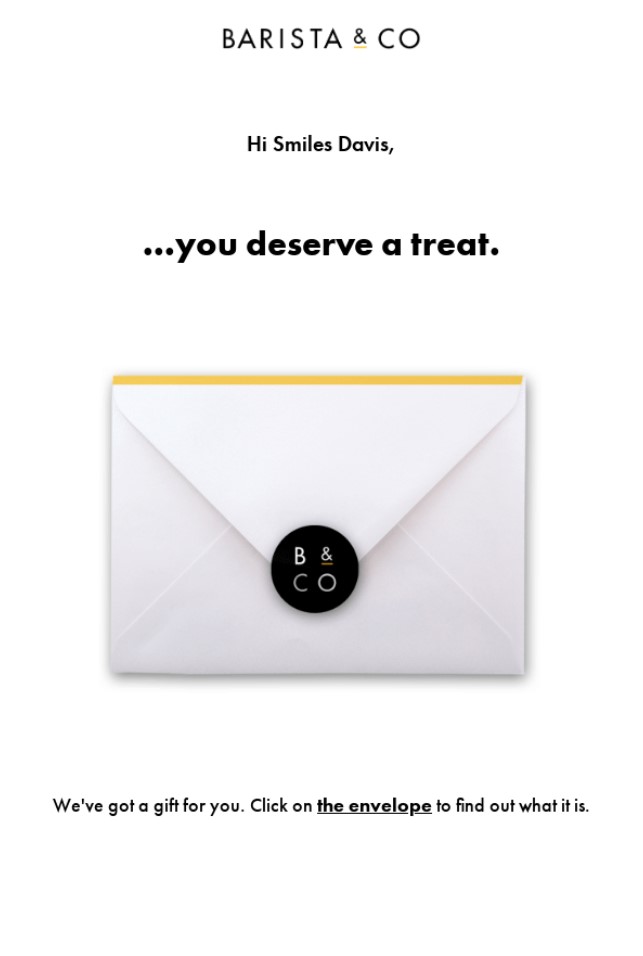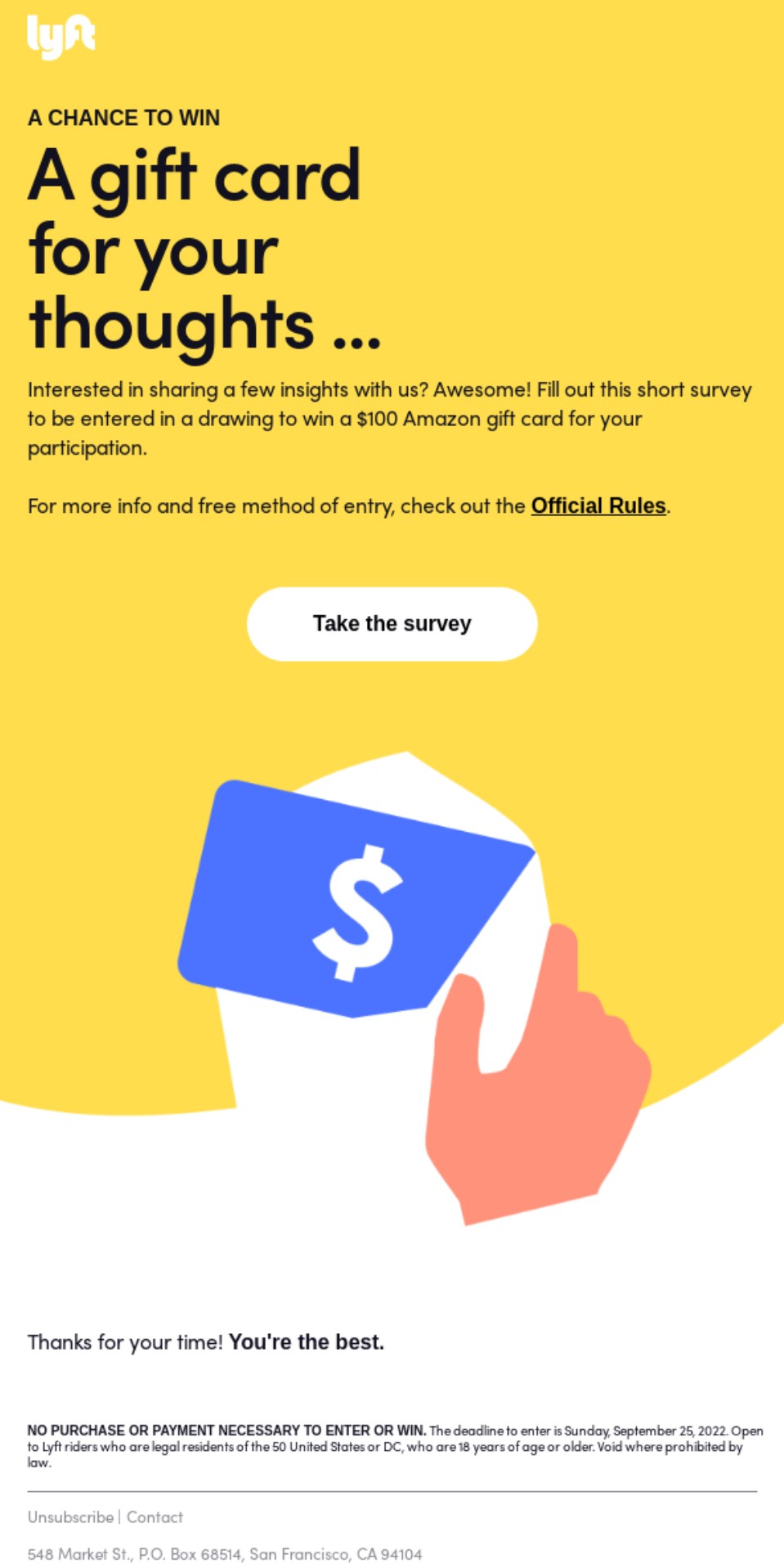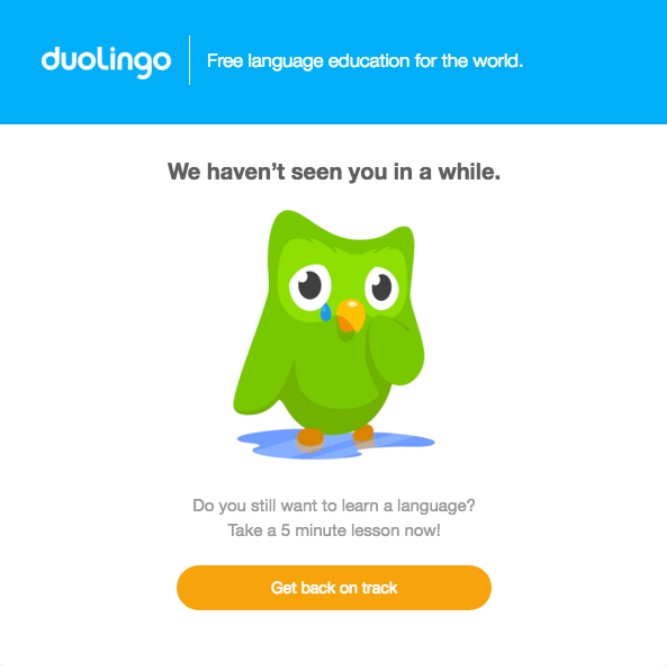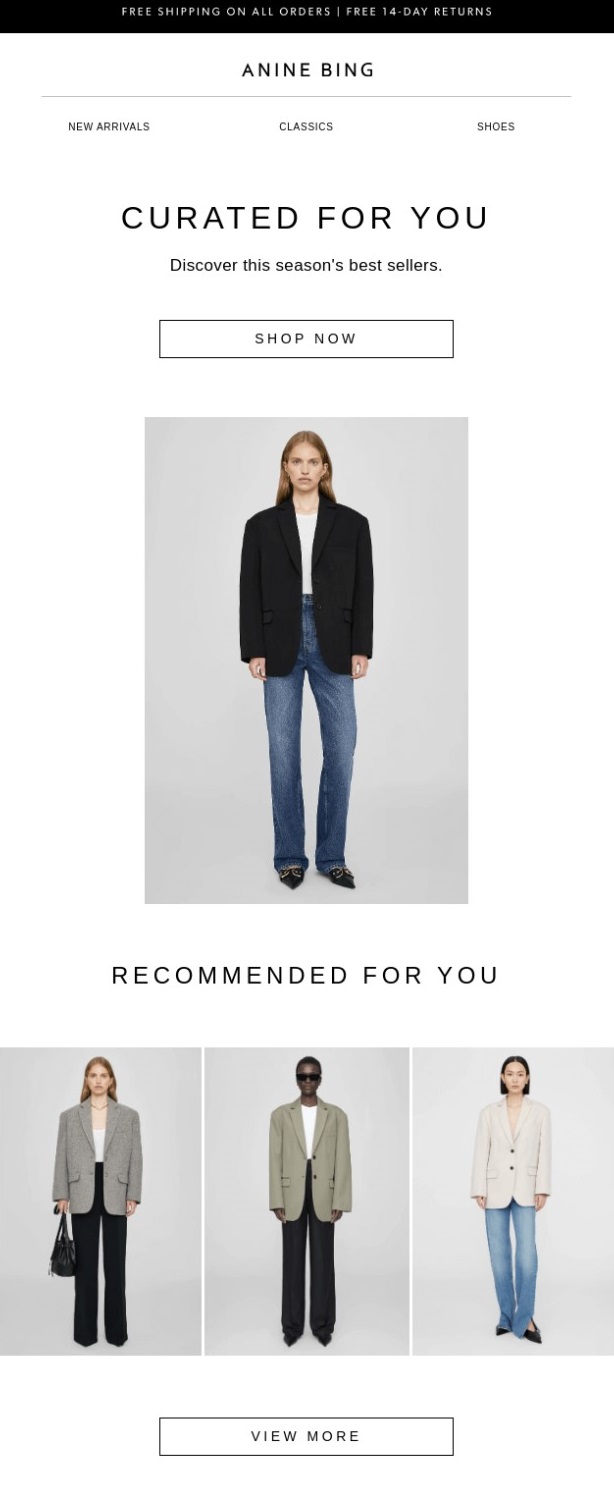Email marketers often invest significant resources in building and maintaining an engaged subscriber base. The goal is to drive as many leads through the sales funnel with email campaigns.
However, despite your efforts, you’ll likely lose the interest of some subscribers over time. This is where re-engagement emails come in.
A re-engagement email is one of the most useful tools for reviving inactive subscribers and reducing email list churn. Launching an effective re-engagement email campaign can reignite the interest of dormant subscribers.
Here, we’ll cover everything you need to know about creating effective re-engagement emails. We’ll also explore some email examples and strategies to help you get started.
Understanding re-engagement emails
Why is it important to re-engage disinterested subscribers? Won’t it be easier to focus solely on acquiring new ones? Aside from maintaining a healthy and active email list for your brand, are there other benefits to re-engagement emails?
Let’s dive into that in this section.
The need for re-engagement
Statistics show that acquiring new leads is 5 to 25 times more expensive than nurturing the ones you already have. With rising customer acquisition costs, a re-engagement email campaign is a cost-effective way to increase sales.
Remember that no matter how great your email content is, a portion of your subscriber base will grow disinterested over time. This could be due to factors like changing preferences and email inbox clutter.
Launching a re-engagement email campaign can help curb this problem. It can:
- Reactivate disengaged or dormant subscribers
- Recover lost sales opportunities
- Maximize the value of your email list
- Improve your sender reputation
Identifying disengaged subscribers
Maximize your re-engagement efforts by identifying inactive email subscribers. Group them based on the following criteria:
- Lower email opens over a defined period
- Decreased purchases or conversions driven by email marketing efforts
- Reduced clicks or website visits from email campaigns within a set timeframe
Isolating these inactive groups can help you come up with a tailored re-engagement strategy that addresses the specific reasons for subscriber inactivity. This way, you can target the audience with a more specific message.
Crafting your re-engagement email campaign
An effective re-engagement email campaign often combines several critical elements. Let’s take a look at what some of these elements are and how to apply them.
Components of the re-engagement campaign
To ensure the success of your re-engagement campaign, you must carefully apply these essential components:
Personalization
Personalized emails are more likely to resonate with your audience and capture their attention. To create effective personalized emails, start by analyzing subscriber data, such as:
- Names
- Preferences
- Subscriptions
- Purchase history
Compelling content
Your re-engagement emails should offer value to the subscriber. This could be achieved by addressing subscriber pain points, providing product updates, or telling engaging stories. Basically, you’ll want to remind them of the benefits your brand offers.
Clear calls-to-action (CTA)
Re-engagement emails should include a prominent and enticing CTA. These CTAs should effortlessly guide the subscriber toward the desired action. For instance, it could nudge subscribers to visit your website, purchase an item, or update their preferences.
Exclusive offers
Provide disengaged subscribers with exclusive offers to pique their interest. This can come in the form of bumper discounts, free shipping, or limited-time promotions.
Social proof
Customers love to see positive reviews and content from other customers. That’s why it makes sense to incorporate social proof elements, whenever possible, into your re-engagement emails. Consider leveraging testimonials, user-generated content, or social media mentions to remind disengaged subscribers of what they’re missing.
Re-engagement email subject lines
When it comes to re-engagement emails, the subject line is your first (and sometimes only) chance to leave a good impression on your subscribers. Use attention-grabbing subject lines to increase the open rates on your re-engagement emails.
Usually, win-back customer emails say, “We miss you,” “Come back, this is your discount,” etc.
Now, here are some good examples of effective re-engagement email subject lines:
- Are you still interested in [Brand Name]? 🤔
- Psst… we have a surprise for our loyal [Brand Name] fans 😎
- We’ve missed you, [First Name]! Come back and save 20% 🔥🔥
Remember, subject lines should be concise and catchy. Likewise, they should align with the overarching tone and messaging of your re-engagement campaign.
Re-engagement email examples
Now, let’s look at some examples of re-engagement emails and why they work.
Incentive email
One of the most effective ways to get inactive subscribers back into your fold is to offer enticing incentives. This could include:
- Coupons
- Discounts
- Free shipping
- Exclusive content
Why exactly does this re-engagement email strategy work? It taps a psychological soft spot that often causes people to feel compelled to reciprocate when they receive something of value.
Barista & Co. provides a great incentive email in this example. The brand offers a treat for its email recipients. However, the real trick here is that you need to click to open the treat. This effectively sparks curiosity in recipients and causes them to click on the link to find the treat.
Additionally, Barista & Co. nailed its subject line in this email, piquing interest with: “Get a free gift just for opening this email!”
 Image via Really Good Emails
Image via Really Good Emails
Feedback request email
Soliciting feedback from disengaged subscribers is a strategic win-back tactic that also generates valuable insights for your business.
This approach not only helps you understand why these subscribers have become less engaged. It also shows them that their opinions are valued and considered. This sense of being valued can strengthen a subscriber’s emotional connection to the brand, potentially rekindling interest and loyalty. However, be ready to offer something in return because this type of campaign doesn’t get much traction from disengaged customers.
Feedback emails can come in the form of:
- Polls
- Quizzes
- Surveys
- Open-ended questions
Subject lines such as “We want to hear from you” or “Your opinion matters to us” can grab attention. Likewise, it signals that the email is seeking input rather than making a sales pitch.
Lyft nails the feedback request email with this example. The brand uses a simple email copy to invite feedback from subscribers. However, it encourages responses by offering willing participants a chance to win a $100 Amazon gift card.
 Image via Really Good Emails
Image via Really Good Emails
The “We Miss You”email
Emotional appeals can be powerful tools in your re-engagement campaign.
The “We Miss You” email tries to tap into your brand’s emotional connection with your subscribers to rekindle interest.
This re-engagement email style is also particularly effective when combined with personalization. This way, the email fosters a deeper connection and appreciation for each subscriber.
Duolingo sends this simple “we haven’t seen you in a while” email featuring a sad and teary Duo to try and elicit an emotional reaction from recipients. Moreover, it ends with a compelling CTA, guiding recipients back on board.
 Image via Really Good Emails
Image via Really Good Emails
New feature email
Promoting new features or updates can be an effective way to re-engage inactive subscribers. If done correctly, it can pique interest and spark FOMO among your recipients.
Your new feature re-engagement email should outline the benefits of your new features or updates and how they enhance the overall user experience.
In this example, Flings kicks off this new feature email with a catchy subject line: “Introducing the new & improved Flings! 🔥”
In addition to the impressive CTA, Flings also provides information on where to get the new product and even includes map access.
 Image via Really Good Emails
Image via Really Good Emails
Personalized recommendations email
Personalization plays an important role in reactivating lost or inactive subscribers. As we’ve mentioned, creating personalized recommendation emails requires leveraging subscriber data. This allows you to create tailored recommendations that align with their interests.
Take a look at this email example from ANINE BING. In addition to the personalized recommendation, ANINE BING spices things up with a free shipping offer on all purchases.
 Image via Really Good Emails
Image via Really Good Emails
Advanced strategies for re-engagement
The fundamental re-engagement strategies we’ve outlined above are great. However, to take your campaign to the next level, you need a few advanced strategies. Let’s take a look at two of these strategies.
Segmenting for tailored re-engagement
Re-engagement campaigns are never a one-size-fits-all solution. You must carefully employ advanced segmentation techniques to guarantee that you deliver highly personalized messages. This helps you target specific subgroups within your inactive audience.
Some powerful segmentation criteria include:
Inactivity duration
Segment your subscribers based on how long they’ve stayed disengaged. Subscribers who’ve been inactive for longer may require different re-engagement tactics compared to more recent ones.
Engagement history
You can segment your subscribers based on past engagement levels, such as the number of emails opened, links clicked, or purchases made. This can help increase the likelihood of reactivating disengaged subscribers and enhance the overall effectiveness of your re-engagement email campaign.
Interests and preferences
Group your disengaged subscribers based on their preferred content, product categories, or topics. This should help create targeted re-engagement campaigns that align with unique needs and desires.
Automated win-back campaigns
One way to send re-engagement campaigns is to schedule them manually and send them to all disengaged customers at once.
However, a more advanced approach to customer re-engagement would be to set up an automation. This would make it an ongoing process, with emails sent whenever a customer triggers the automation.
An even more advanced way includes text messages. For example, you send an email saying, “We miss you,” when a customer has been inactive for three months. If the customer doesn’t open the email, the SMS is sent saying: “Hey, we miss you! Check your inbox for a surprise from us!”
Testing and optimizing re-engagement emails
The success of your re-engagement email campaigns heavily relies on continuous testing and optimization.
Run A/B tests on the different elements of your campaigns, such as re-engagement email subject lines, content, offers, and CTAs. This should provide useful insights into what works with your audience and what doesn’t.
A/B testing is a straightforward strategy. To begin, identify the key metrics you want to optimize. Then, create variations of your re-engagement emails, testing one element at a time to isolate the impact of each change.
After that, measure the performance of each variation, and use the data to refine and improve your campaign.
This data-driven approach ensures that your efforts are continuously optimized and results improved over time.
Remember, re-engagement email campaigns are not a one-time effort. They require constant refinement and adaptation to align with evolving subscriber preferences and behaviors.
Launching and measuring your re-engagement campaign
Crafting compelling re-engagement emails is just the first step. Successful campaigns require strategic execution, ongoing monitoring, and data-driven optimization to maximize impact and drive meaningful results.
Let’s take a look at some of the best practices for re-engagement campaign execution.
Best practices for campaign execution
Consider your timing
Carefully consider the optimal timing for sending your re-engagement emails. Take several factors into account, including subscriber time zones, historical engagement patterns, and industry trends.
Implement a schedule
Re-engagement campaigns are often most effective when executed as a series of touchpoints rather than a single email. Establish a well-planned schedule for your follow-up emails. Provide enough time between messages to avoid overwhelming your audience.
Monitor subscriber responses
Closely monitor subscriber interactions, such as opens, clicks, and unsubscribes, in real time. Be prepared to adjust your approach or pause the campaign if necessary.
Follow up on conversions
For subscribers who re-engage, have a post-conversion strategy in place to nurture the revived relationship and foster continued engagement.
Respect opt-out requests
Despite your best efforts, some subscribers may still choose to disengage. Respect their choice by providing an easy way to unsubscribe or update their communication preferences.
Key metrics to track campaign success
Here are the key re-engagement email campaign metrics you must monitor to ensure success:
Open rates
This metric represents the percentage of subscribers who opened your re-engagement emails. Craft catchy subject lines and time your emails strategically to achieve a higher open rate.
Click-through rates
CTRs indicate how many subscribers engage with the content of your emails by clicking on links or CTAs. To get higher CTRs, send personalized and relevant email content that resonates with your subscribers.
Conversion rates
Ultimately, the success of your re-engagement campaign hinges on its ability to drive intended actions from your subscribers. Track conversion rates to assess your campaign’s overall impact on your business goals.
List growth and churn rate
Monitor changes in your email list size, paying attention to the number of new subscribers acquired versus those who unsubscribe or remain inactive. This helps you assess the long-term effectiveness of your re-engagement efforts.
Revenue and ROI
Tracking these metrics is crucial for understanding the financial impact of your re-engagement initiatives. By analyzing the revenue and ROI, you can identify which strategies are most effective. Then, you can allocate resources more efficiently in future campaigns. This helps maximize profitability and ensure cost-effective marketing decisions.
Wrap up
Considering the dynamic nature of today’s email marketing landscape, re-engagement email campaigns are important for maintaining a healthy and active subscriber base.
With the tips and strategies outlined in this post, you can launch effective re-engagement email campaigns that rekindle interest and foster stronger relationships with your subscribers. This helps you stay ahead of the curve and record notable success in your business.
Finally, remember that subscriber re-engagement is not a one-off event. You must adopt the habit of constantly testing and refining your methods to stay in sync with market trends.
